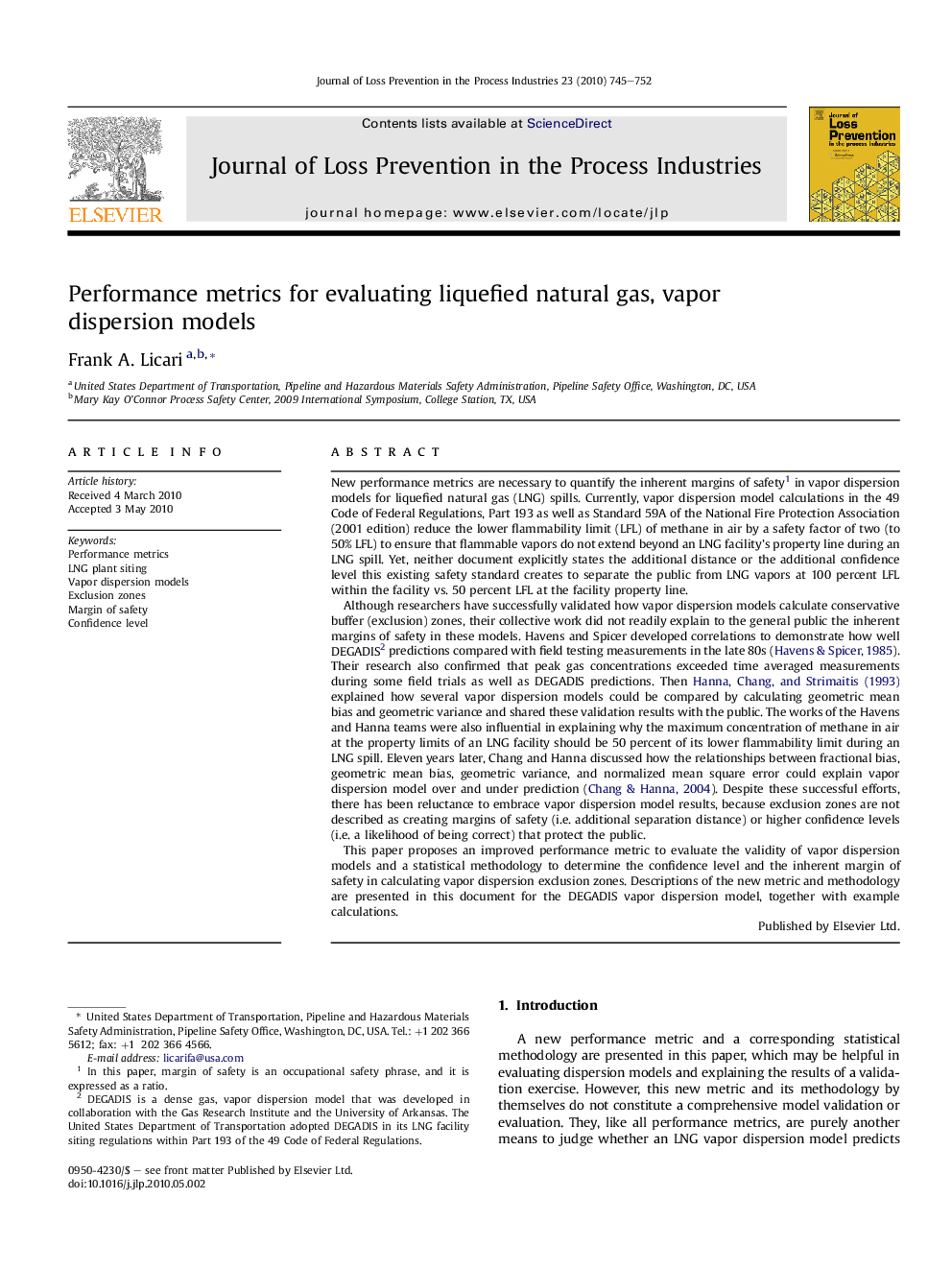| کد مقاله | کد نشریه | سال انتشار | مقاله انگلیسی | نسخه تمام متن |
|---|---|---|---|---|
| 587090 | 878254 | 2010 | 8 صفحه PDF | دانلود رایگان |

New performance metrics are necessary to quantify the inherent margins of safety1 in vapor dispersion models for liquefied natural gas (LNG) spills. Currently, vapor dispersion model calculations in the 49 Code of Federal Regulations, Part 193 as well as Standard 59A of the National Fire Protection Association (2001 edition) reduce the lower flammability limit (LFL) of methane in air by a safety factor of two (to 50% LFL) to ensure that flammable vapors do not extend beyond an LNG facility’s property line during an LNG spill. Yet, neither document explicitly states the additional distance or the additional confidence level this existing safety standard creates to separate the public from LNG vapors at 100 percent LFL within the facility vs. 50 percent LFL at the facility property line.Although researchers have successfully validated how vapor dispersion models calculate conservative buffer (exclusion) zones, their collective work did not readily explain to the general public the inherent margins of safety in these models. Havens and Spicer developed correlations to demonstrate how well DEGADIS2 predictions compared with field testing measurements in the late 80s (Havens & Spicer, 1985). Their research also confirmed that peak gas concentrations exceeded time averaged measurements during some field trials as well as DEGADIS predictions. Then Hanna, Chang, and Strimaitis (1993) explained how several vapor dispersion models could be compared by calculating geometric mean bias and geometric variance and shared these validation results with the public. The works of the Havens and Hanna teams were also influential in explaining why the maximum concentration of methane in air at the property limits of an LNG facility should be 50 percent of its lower flammability limit during an LNG spill. Eleven years later, Chang and Hanna discussed how the relationships between fractional bias, geometric mean bias, geometric variance, and normalized mean square error could explain vapor dispersion model over and under prediction (Chang & Hanna, 2004). Despite these successful efforts, there has been reluctance to embrace vapor dispersion model results, because exclusion zones are not described as creating margins of safety (i.e. additional separation distance) or higher confidence levels (i.e. a likelihood of being correct) that protect the public.This paper proposes an improved performance metric to evaluate the validity of vapor dispersion models and a statistical methodology to determine the confidence level and the inherent margin of safety in calculating vapor dispersion exclusion zones. Descriptions of the new metric and methodology are presented in this document for the DEGADIS vapor dispersion model, together with example calculations.
Journal: Journal of Loss Prevention in the Process Industries - Volume 23, Issue 6, November 2010, Pages 745–752